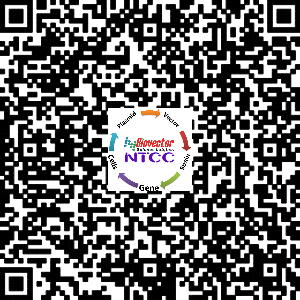S. Typhimurium wild-type, TV119 and SL684 strains鼠伤寒沙门氏菌菌株 BioVector NTCC质粒载体菌种细胞基因保藏中心
- 价 格:¥498685
- 货 号:S. Typhimurium wild-type, TV119 and SL684 strains
- 产 地:北京
- BioVector NTCC典型培养物保藏中心
- 联系人:Dr.Xu, Biovector NTCC Inc.
电话:400-800-2947 工作QQ:1843439339 (微信同号)
邮件:Biovector@163.com
手机:18901268599
地址:北京
- 已注册
S. Typhimurium wild-type, TV119 and SL684 strains鼠伤寒沙门氏菌菌株
LPS consists of three distinct regions: lipid A, R-core polysaccharide, and O-repeating unit [15]. The structures of LPSs used in this study are shown in Fig. 1. Some chemical linkages have not been fully determined, thus, the most reasonable structures are summarized with reference to the recent structural studies [4,16–20]. The LPSs were analyzed by DOC–PAGE and the developed gel was visualized by silver staining (Fig. 2). The LPSs of the φX174-insensitive strains, S. Typhimurium wild-type and E. coli O111:B4 have O-repeating units in addition to the R-core [16] and showed characteristic ladder-like patterns on the DOC–PAGE. The host strains of φX174 are limited to the Ra strains that have complete R-core sequences on their LPSs and have no O-repeating unit in addition to the R-core. However, some types of R-cores such as the E. coli R1-R4, Salmonella, and Shigella cores are acceptable as the receptors [4]. The LPS of E. coli C, one of the native host strains of φX174, is made of a complete the E. coli R1-type core [4,17,18] and showed a simple band on the DOC–PAGE. The E. coli R1 core consists of two galactose (Gal), three glucose (Glc), three L-glycero-D-manno-heptose (Hep), and two 3-deoxy-D-manno-octulosonic acid (KDO) residues. S. Typhimurium TV119 (Ra) and E. coli EH100 (Ra) have complete Salmonella-type and E. coli R2-type cores [17,18], and they are φX174-sensitive strains [4]. These Ra-type LPSs showed the same mobility on the DOC–PAGE. The LPSs of the φX174-insensitive strains, S. Typhimurium SL684 (Rc) [17], E. coli J5 (RcP+) [19], and E. coli F583 (Rd2) [20], have partial structures of the Salmonella, E. coli R3, and E. coli R1-type cores, respectively. These LPSs were used in the following enzyme-linked assay.Based on the affinity of LPS of E. coli C as 100%, the affinity of the LPS of S. Typhimurium TV119 (Ra) for HisH was almost comparable (110±8%); however, that for HisG was inferior (72±7%) to the LPS of E. coli C. The LPS of E. coli EH100 showed almost the same affinity for HisG (72±3%) as the LPS of S. Typhimurium TV119. These two LPSs have very similar structures in the R-core: only the third residues from the non-reducing end are different from each other (see Fig. 1). The LPSs of S. Typhimurium SL684 (Rc) and E. coli J5 (RcP+) lacking four of five hexose residues of the Salmonella and E. coli R3-type cores showed limited affinities for both HisH and HisG. Their affinities were decreased significantly for HisH rather than HisG. A decreased affinity was also observed for HisH than HisG for the LPS of E. coli F583 (Rd2) lacking all hexose and two or three heptose residues from the E. coli R1-type core. The least affinity was observed for a smooth LPS of E. coli O111:B4 for both HisH and HisG. This observation is well consistent with the fact that φX174 cannot infect any smooth strains that have O-repeating units in addition to the R-core [4]. The LPS binding by spike H protein was determined predominantly by the hexose residues of the outer R-core and only partly by the heptose residues of the inner R-core, while the contributions of heptose and KDO residues of the inner R-core are more significant for spike G protein than those for H protein. Jazwinski et al. [22] reported about 60% of binding efficiency of the φX174 particle to the S. Typhimurium SH180 (Ra) cell compared with the E. coli C cell. Because the SH180 strain has the same R-core structure as the TV119 strain, the present data, which showed 72% of affinity to HisG for the LPS of S. Typhimurium TV119 compared to that for E. coli C, are very well consist with their result. Thus, the binding selectivity of the spike G protein to the LPS of host cell well explains the binding selectivity of a whole φX174 particle to the host cell.
Supplier来源:BioVector NTCC Inc.
TEL电话:400-800-2947
Website网址: http://www.biovector.net
LPS consists of three distinct regions: lipid A, R-core polysaccharide, and O-repeating unit [15]. The structures of LPSs used in this study are shown in Fig. 1. Some chemical linkages have not been fully determined, thus, the most reasonable structures are summarized with reference to the recent structural studies [4,16–20]. The LPSs were analyzed by DOC–PAGE and the developed gel was visualized by silver staining (Fig. 2). The LPSs of the φX174-insensitive strains, S. Typhimurium wild-type and E. coli O111:B4 have O-repeating units in addition to the R-core [16] and showed characteristic ladder-like patterns on the DOC–PAGE. The host strains of φX174 are limited to the Ra strains that have complete R-core sequences on their LPSs and have no O-repeating unit in addition to the R-core. However, some types of R-cores such as the E. coli R1-R4, Salmonella, and Shigella cores are acceptable as the receptors [4]. The LPS of E. coli C, one of the native host strains of φX174, is made of a complete the E. coli R1-type core [4,17,18] and showed a simple band on the DOC–PAGE. The E. coli R1 core consists of two galactose (Gal), three glucose (Glc), three L-glycero-D-manno-heptose (Hep), and two 3-deoxy-D-manno-octulosonic acid (KDO) residues. S. Typhimurium TV119 (Ra) and E. coli EH100 (Ra) have complete Salmonella-type and E. coli R2-type cores [17,18], and they are φX174-sensitive strains [4]. These Ra-type LPSs showed the same mobility on the DOC–PAGE. The LPSs of the φX174-insensitive strains, S. Typhimurium SL684 (Rc) [17], E. coli J5 (RcP+) [19], and E. coli F583 (Rd2) [20], have partial structures of the Salmonella, E. coli R3, and E. coli R1-type cores, respectively. These LPSs were used in the following enzyme-linked assay.Based on the affinity of LPS of E. coli C as 100%, the affinity of the LPS of S. Typhimurium TV119 (Ra) for HisH was almost comparable (110±8%); however, that for HisG was inferior (72±7%) to the LPS of E. coli C. The LPS of E. coli EH100 showed almost the same affinity for HisG (72±3%) as the LPS of S. Typhimurium TV119. These two LPSs have very similar structures in the R-core: only the third residues from the non-reducing end are different from each other (see Fig. 1). The LPSs of S. Typhimurium SL684 (Rc) and E. coli J5 (RcP+) lacking four of five hexose residues of the Salmonella and E. coli R3-type cores showed limited affinities for both HisH and HisG. Their affinities were decreased significantly for HisH rather than HisG. A decreased affinity was also observed for HisH than HisG for the LPS of E. coli F583 (Rd2) lacking all hexose and two or three heptose residues from the E. coli R1-type core. The least affinity was observed for a smooth LPS of E. coli O111:B4 for both HisH and HisG. This observation is well consistent with the fact that φX174 cannot infect any smooth strains that have O-repeating units in addition to the R-core [4]. The LPS binding by spike H protein was determined predominantly by the hexose residues of the outer R-core and only partly by the heptose residues of the inner R-core, while the contributions of heptose and KDO residues of the inner R-core are more significant for spike G protein than those for H protein. Jazwinski et al. [22] reported about 60% of binding efficiency of the φX174 particle to the S. Typhimurium SH180 (Ra) cell compared with the E. coli C cell. Because the SH180 strain has the same R-core structure as the TV119 strain, the present data, which showed 72% of affinity to HisG for the LPS of S. Typhimurium TV119 compared to that for E. coli C, are very well consist with their result. Thus, the binding selectivity of the spike G protein to the LPS of host cell well explains the binding selectivity of a whole φX174 particle to the host cell.
Supplier来源:BioVector NTCC Inc.
TEL电话:400-800-2947
Website网址: http://www.biovector.net
- 公告/新闻



 免费订购电话: 400-800-2947
免费订购电话: 400-800-2947